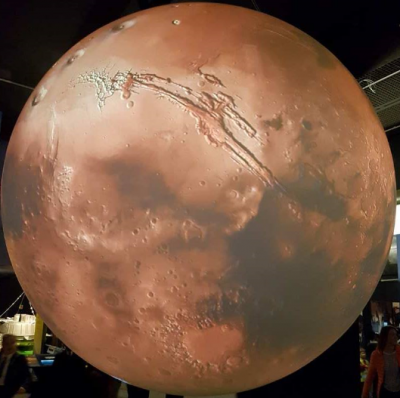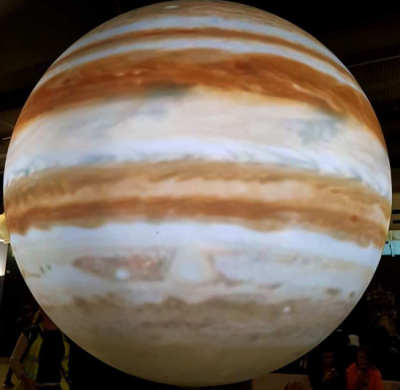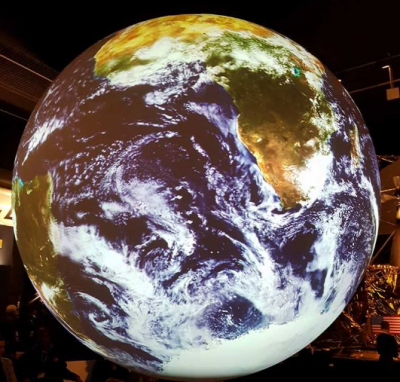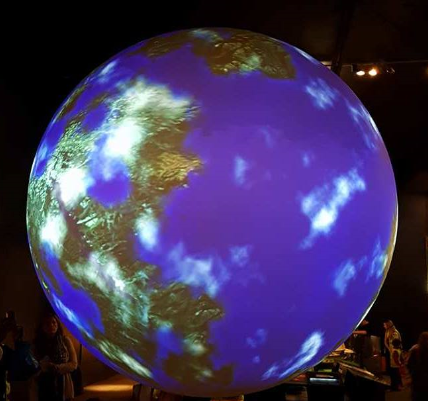Recent visitors to the Science Museum may have spied the updated ‘Planet Science’ display in our Exploring Space gallery. Space Curator Doug Millard explores the story behind ‘Planet Science’ below.

It’s hard to believe that we didn’t know what the surface of Mars looked like until 1964. That was the year NASA’s Mariner 4 spacecraft flew past the planet and returned the first images. And for many it was a big disappointment; no rivers or oceans; no vegetation; no indications of life at all – just a seemingly barren, crater-strewn terrain looking much like our Moon.

Today the red planet has been visited by a flotilla of spacecraft flying past, orbiting or even landing, and most returning ever-improving imagery. The Science Museum’s new ‘Planet Science’ display projects just one of these scenes: a glorious whole-world rendition of Mars showing ice caps, the Valles Marineris canyon – ten times the size of Earth’s Grand Canyon – and other surface features. The image is projected onto a white globe suspended in the Exploring Space gallery. The image itself rotates presenting the impression of a mini-Mars floating in space.
We do not stay at Mars but move on to other worlds: Jupiter confronts us in all its clouded majesty; the largest planet in the solar system – composed almost entirely of hydrogen and helium. We can watch the coloured cloud bands swirling their ways around the vast planet. Then onto one of Jupiter’s moons: Io, otherwise known as the cosmic pizza because of its yellow and red blotches … which in reality are sulphurous effusions and eruptions on this volcanically active world.

The final destination looks a little like Earth with blue oceans, continents and white clouds but is an imagined planet way beyond the solar system. We are now discovering thousands of these ‘exoplanets’ but we have yet to see one in any detail – they are just too far away even for the most powerful of telescopes. But someday soon more sophisticated and efficient tools and instruments will enable scientists to peer ever more deeply out into space and towards these still murky and mysterious worlds. And one day these observations may tell us whether we are alone or just one of many life forms strewn through our galaxy.

The Planet Science display is courtesy of Science On a Sphere® from the National Oceanic and Atmospheric Administration (NOAA)
